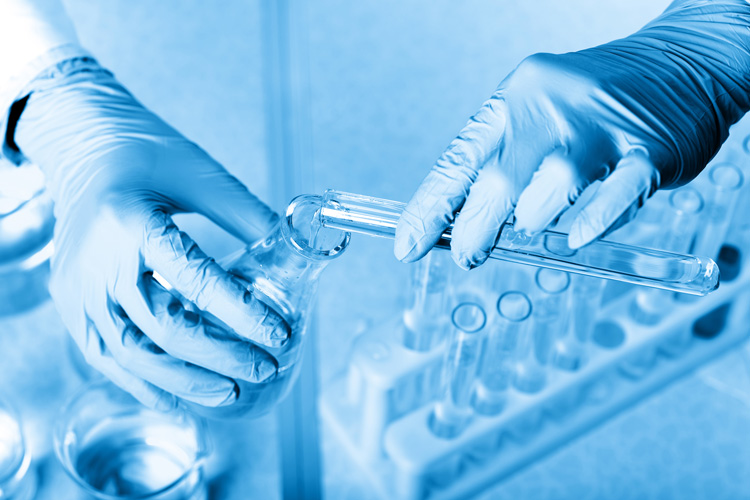+86-13961672821
+86-510-86268020
trust@hi2000.com
trust@hi2000.com
Room 807,No.169 Changjiang road,Huifu plaza,New centre,Jiangyin,Jiangsu China



Views: 0 Author: Site Editor Publish Time: 2024-11-05 Origin: Site









In the realm of wastewater treatment, the quest for effective solutions to tackle the challenges posed by polluted water is ongoing. Among the various methods and chemicals available, Poly(Diallyl Dimethyl Ammonium Chloride) (PDAC) has emerged as a promising agent. This article delves into the multifaceted role of PDAC in wastewater treatment, highlighting its unique properties, applications, and the science behind its effectiveness.
PDAC, a polymer with a high molecular weight, is known for its cationic nature, which makes it an excellent flocculating agent. Its ability to neutralize negative charges in water, typically caused by organic and inorganic particles, enables PDAC to bind these particles together, forming larger aggregates or ‘flocs’. These flocs can then be easily removed from the water, thus clarifying the wastewater.
Beyond its flocculating properties, PDAC is also recognized for its antimicrobial activity. The quaternary ammonium groups in its structure are responsible for this property, allowing PDAC to inhibit the growth of bacteria, fungi, and other microorganisms. This dual functionality of flocculation and disinfection makes PDAC a versatile agent in wastewater treatment.
Several studies have explored the efficacy of PDAC in treating different types of wastewater. For instance, a study on the treatment of textile effluents demonstrated that PDAC significantly reduced the color, turbidity, and organic content of the wastewater, making it suitable for discharge or further treatment. Another research focused on industrial wastewater containing high levels of suspended solids and emulsified oils. The application of PDAC resulted in a remarkable decrease in suspended solids, oil content, and an overall improvement in water quality.
These findings underscore the potential of PDAC as a cost-effective and efficient solution for treating various types of wastewater, from industrial effluents to municipal sewage.
PDAC offers several advantages over traditional wastewater treatment methods, such as sedimentation and filtration. Firstly, PDAC’s flocculating properties enhance the sedimentation process, leading to clearer effluent and reducing the load on subsequent filtration stages. Secondly, its antimicrobial activity not only improves water quality but also reduces the risk of biofouling in filtration systems.
Moreover, PDAC’s ability to function effectively across a wide range of pH levels and temperatures makes it suitable for use in various environmental conditions. This versatility, combined with its high efficiency in removing contaminants, positions PDAC as a superior alternative to conventional treatment methods.
The use of PDAC in wastewater treatment not only offers environmental benefits but also has significant economic implications. By improving the efficiency of wastewater treatment processes, PDAC reduces the energy and chemical requirements, leading to lower operational costs. Additionally, the effective removal of contaminants ensures compliance with environmental regulations, thus avoiding potential fines and penalties.
From an environmental perspective, PDAC’s ability to reduce the discharge of harmful pollutants into water bodies contributes to the preservation of aquatic ecosystems. Its biodegradable nature also minimizes the risk of long-term environmental damage, making PDAC a sustainable choice for wastewater treatment.
Despite the promising benefits of PDAC, several challenges remain to be addressed. One of the primary concerns is the potential toxicity of PDAC residues in treated water. Further research is needed to assess the long-term effects of PDAC on human health and the environment. Additionally, the cost of PDAC production and its scalability for large-scale applications pose challenges for its widespread adoption in the industry.
Future research should focus on developing eco-friendly synthesis methods for PDAC, exploring its application in different wastewater treatment scenarios, and assessing its performance in combination with other treatment technologies. By addressing these challenges, PDAC can be positioned as a key player in the future of wastewater treatment.
PDAC emerges as a promising agent in the field of wastewater treatment, offering a combination of flocculating and antimicrobial properties. Its effectiveness in treating various types of wastewater, coupled with its environmental and economic benefits, positions PDAC as a superior alternative to traditional treatment methods. However, further research is needed to address the challenges of toxicity, production cost, and scalability. With continued innovation and research, PDAC has the potential to play a significant role in the future of sustainable wastewater management.